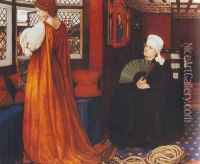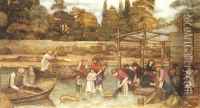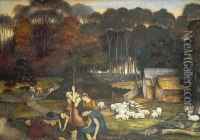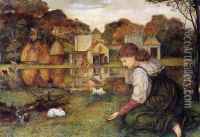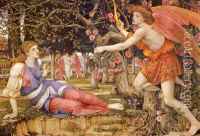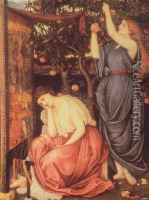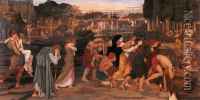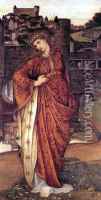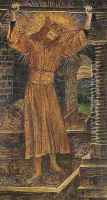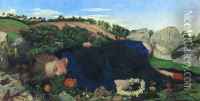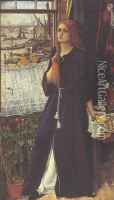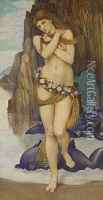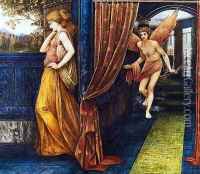John Roddam Spencer Stanhope Paintings
John Roddam Spencer Stanhope was a British artist associated with the second generation of Pre-Raphaelites and the Aesthetic movement. Born on January 20, 1829, in Yorkshire, England, Stanhope came from an aristocratic family and was educated at home, later studying at Oxford. His artistic training began under the guidance of his uncle, the artist John Spencer Stanhope, and continued at the Royal Academy schools in London. He was also a pupil of the Pre-Raphaelite painter G.F. Watts.
Stanhope’s early works were deeply influenced by the Pre-Raphaelite Brotherhood’s dedication to detailed observation of nature and vivid color, which can be seen in his paintings such as 'Thoughts of the Past' from 1859. However, as his style evolved, it became more aligned with the Aesthetic movement, which emphasized art for art's sake, focusing on beauty rather than social or moral messages. This is evident in works like 'Love and the Maiden' from 1877, which showcase his use of mythological and allegorical subjects, rendered with an ethereal, dreamlike quality.
Throughout his career, Stanhope was committed to exploring historical and mythological themes, often presenting them in a manner that reflected his own spiritual and philosophical interests. He was less interested in the medievalism that characterized the work of the earlier Pre-Raphaelites but instead found inspiration in the art and literature of ancient Greece and Italy.
Stanhope spent much of his life in Italy, where he was influenced by the classical art and the bright Mediterranean light, which infused his work with a distinctive luminosity. His Italian experiences also led him to experiment with fresco and tempera, mediums that complemented his aesthetic sensibilities and allowed him to achieve a timeless quality in his works.
Despite his association with well-known movements and his artistic achievements, Stanhope did not gain the same level of fame as some of his contemporaries. His work was, however, appreciated by discerning collectors and fellow artists. He exhibited regularly at the Royal Academy and other venues until his health began to decline.
John Roddam Spencer Stanhope died on August 2, 1908, in Florence, Italy, leaving behind a body of work that, while perhaps not as widely recognized as that of some of his peers, contributes significantly to the understanding of Victorian art and the transition from Pre-Raphaelitism to Aestheticism.
